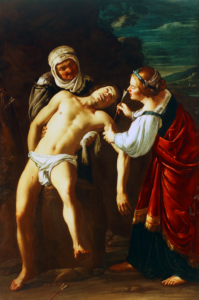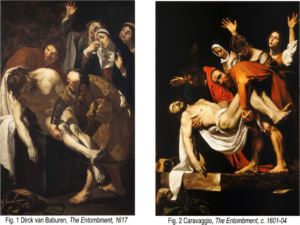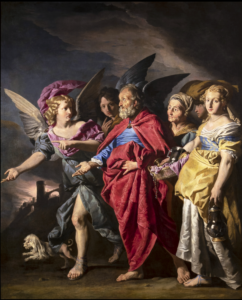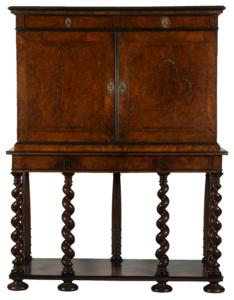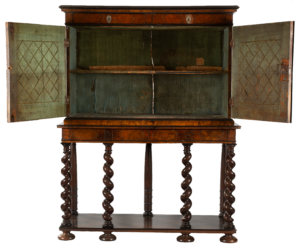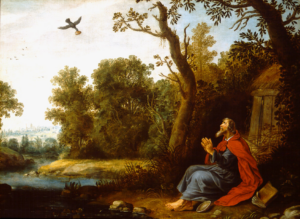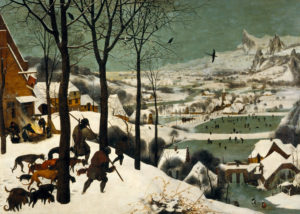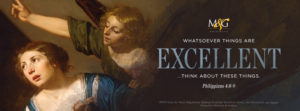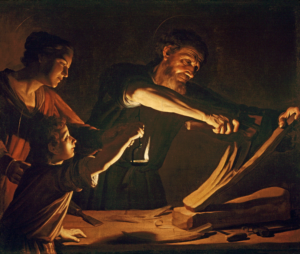St. Sebastian Aided by St. Irene
Oil on canvas
Dirck van Baburen (attr. to)
Dutch, c. 1594–d. 1624
In 1581 several provinces in the Netherlands joined in signing The Act of Abjuration, a declaration of independence freeing them from allegiance to Philip II of Spain. With this abjuration these self-governing territories became known as the United Provinces of the Netherlands or simply the Dutch Republic. In Baroque Painting: Two Centuries of Baroque Masterpieces Stefano Zuffi notes that by the early 1600s this Republic “enjoyed a private prosperity and social harmony that was unique.” Precise indicators of this prosperity included documentation noting a healthy daily consumption of calories, high literacy rates, and peaceful co-existence among a diverse religious population. Equally interesting is the fact that these provinces also had “the highest ratio in Europe of works of art, particularly paintings, to number of inhabitants” (Zuffi, p. 154). This cultural backdrop produces a stunning array of artistic talent—Rembrandt, Vermeer, Frans Hals, Heemskerck, Honthorst, Terbrugghen, and the subject of this article Dirck van Baburen.
Although we know that Baburen was born in Utrecht in the late sixteenth century, pinpointing the precise year of his birth is not easily done. For example, in a 2007 monograph on the artist noted scholar Leonard Slatkes puts the date circa 1595. However, art historian Wayne Franits argues for an earlier date, circa 1592. According to Franits this date makes more sense because it places the painter “at an appropriate age for completing his training. . .and traveling to Rome.” Regardless, both scholars agree that the young Dirck began his career under the tutelage of Paulus Moreelse. Moreelse was a distinguished portrait painter who along with Abraham Bloemaert founded Utrecht’s “St. Lucas-gilde.”
After completing his training in 1612 Baburen set out for Italy. He soon settled in the “Eternal City” of Rome. There he came under the spell of the Caravaggisti—stylistic followers of the famed Michelangelo Caravaggio (1571-1610). Caravaggio was one of the most original and influential painters of the 17th century. What set him apart was the dramatic illumination of his canvases which he created by using dark tonalities punctuated with bright shafts of light. This technique called tenebrism is derived from the Italian word, tenebroso, meaning dark or gloomy. Figures 1 and 2 not only illustrate Caravaggio’s innovative technique but also point to the impact of this technique on followers like Baburen.
In comparing Baburen’s canvas to Caravaggio’s Wayne Franits writes: “The Dutch painter’s famed altarpiece The Entombment (Fig. 1), [was] painted in 1617 as part of a group of canvases . . . to adorn the Pietà Chapel in the church of San Pietro. . . . It is well known that The Entombment testifies to its maker’s knowledge of . . . Caravaggio’s famous painting of the same subject (fig. 2), which hung at that time in the Vittrice Chapel in Santa Maria in Vallicella. Van Baburen’s exposure to Caravaggio’s work must have impressed upon him the fact that strongly illuminated figures set against a dark background literally stand out forcefully within a dusky chapel. Van Baburen also deployed the same basic compositional structure as Caravaggio, with its wedgelike arrangement of figures set at a diagonal, cascading downward toward the body of the dead Christ. In van Baburen’s Entombment, however, the stone of the tomb, which, like the Italian’s, also serves as the stone of unction (with its eucharistic implications), is more tablelike while the body of Christ has been rendered in an upright, almost seated position.”
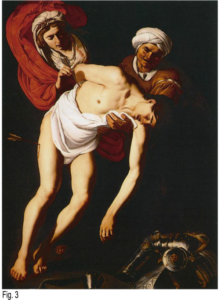 Baburen would return to Utrecht in 1620 where he, along with Gerrit van Honthorst and Hendrick Terbrugghen formed the Utrecht Caravaggisti. Although he died only four years later, his style continued to develop becoming less Italian and more distinctly Dutch. A comparison of M&G’s St. Sebastian Aided by St. Irene to an earlier version he completed while in Rome (Fig. 3) highlights these distinctions especially in the physical appearance of the characters. St. Sebastian was the patron saint of plague victims and a popular subject in religious art throughout the 17th century. The article by Armand P. Gelpi in the Resources section provides a detailed overview of his iconography and connection to the plague.
Baburen would return to Utrecht in 1620 where he, along with Gerrit van Honthorst and Hendrick Terbrugghen formed the Utrecht Caravaggisti. Although he died only four years later, his style continued to develop becoming less Italian and more distinctly Dutch. A comparison of M&G’s St. Sebastian Aided by St. Irene to an earlier version he completed while in Rome (Fig. 3) highlights these distinctions especially in the physical appearance of the characters. St. Sebastian was the patron saint of plague victims and a popular subject in religious art throughout the 17th century. The article by Armand P. Gelpi in the Resources section provides a detailed overview of his iconography and connection to the plague.
Dirck van Baburen died in February 1624; he was buried in the medieval parish church of Buurkerk. His teacher Paulus Moreelse would be laid to rest there 9 years later.
Donnalynn Hess, Director of Education
Resources:
Baroque Painting: Two Centuries of Baroque Masterpieces, Ed. Stefano Zuffi
“Religious Policies in the Seventeenth-Century Dutch Republic,” Jo Spanns
“Dirck van Baburen and the ‘Self-Taught’ Master, Angelo Caroselli,” Wayne Franits
“Saint Sebastian and the Black Death,” Armand P. Gelpi, MD
Saint Sebastian Attended by Saint Irene and Her Maid, Dirck van Baburen (attributed to)
Published 2024
